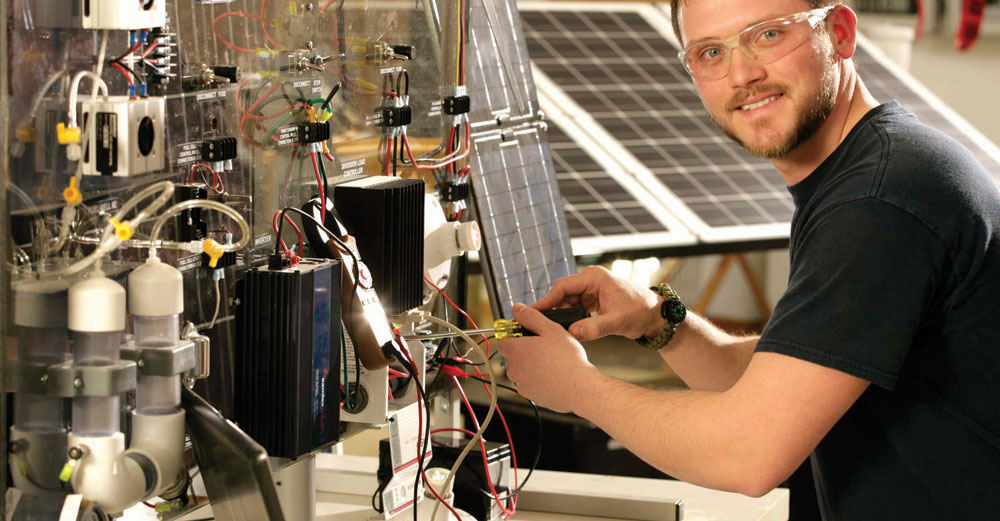
We have entered the Innovation Age, a time in our history when the demands of our workforce have been forever influenced by computers and the internet. During the last few decades, new technology has changed how we communicate, how we live, and how we work. With the rapid growth in the number of devices connected to the internet (the Internet of Things), significantly improved computing and computational capacity, and advances in artificial intelligence and machine learning, the nature of today’s and tomorrow’s jobs is transforming.
This trend is impacting many sectors of our economy. It challenges the traditional manufacturing industry, and transforms how products are designed, manufactured, distributed, used, and serviced. These challenges have in turn changed the required skillsets of the manufacturing workforce. In a 2012 Manpower survey, manufacturers were asked to look ahead three to five years and judge what their needs would be in the future. They ranked access to a highly skilled, flexible workforce as the single most important factor in their effectiveness, more than factors such as new product innovation or increased market share.
In higher education, what do we do with this information? It is a critical mission to colleges and universities to prepare students for the workforce of the future so that they are well-prepared for a career and able to adapt to changing workforce needs. At SUNY, our campuses are working hard to adequately prepare New York State’s future manufacturing workforce and build a competitive manufacturing talent pool for all industries. The path forward to address this issue is non-trivial – the need for a strong channel of qualified workers is in front of us in every industry. With that in mind, there are a few questions we need to regularly consider:
- How do we provide manufacturing curricula that are in sync with the most recent research and technological breakthroughs?
- How do we afford students education and training opportunities in data, data analytics, artificial intelligence, robotics, machine leaning, to name of few, that are tailored for the future manufacturing industry?
- How do we offer internships or hands-on learning experiences systematically and rigorously?
- How do we reduce the cost of curricula development, accreditation, and distribution through exploring innovative approaches and leveraging resources across the System?
- How do we build sustainable partnerships with local or regional industry partners to make our manufacturing programs more attractive to both prospective students and potential employers?
Some of these answers are developing already. Recently, we’ve written about a new series Digital Design and Manufacturing courses being offered online through the University at Buffalo. Other campuses, from community colleges to university centers, are bringing their students programs in nano science, biomedical research and engineering, mechatronics, clean energy technology, and much, much more. Some campuses are even introducing our K-12 communities to the career skills of the future as well.
Many of the answers to our questions come from or will come from our faculty, staff and researchers within SUNY, as well as from our growing partnerships with the businesses of New York State. The future is changing daily, but with our ingenuity and preparedness in and out of the classroom, there’s no need that can’t be met through SUNY.
Content contributed by Grace Wang, Vice Chancellor for Research and Economic Development at SUNY.



